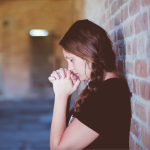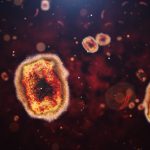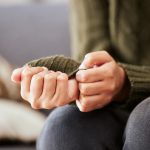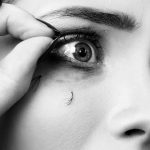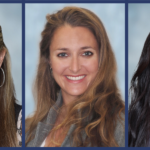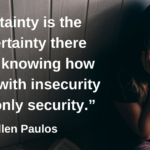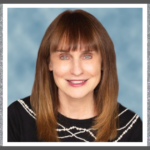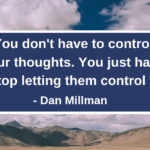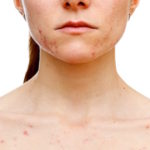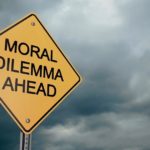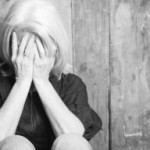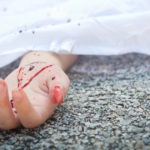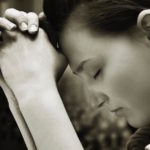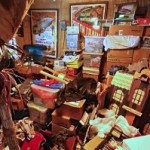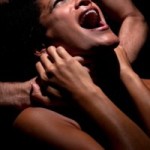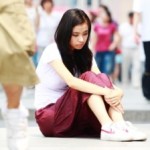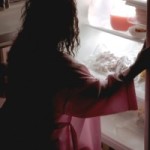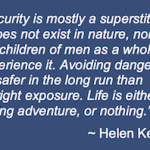“If I knew then what I know now.”
Chances are, if you’re reading this, you’ve found yourself saying the same thing at some point in your adult life. Nowhere is this more relevant than from the perspective of someone looking back on a childhood with Obsessive Compulsive Disorder (OCD) or an Obsessive Compulsive Spectrum Disorder. When I meet a new client under 18, there is a powerful sense of traveling through time. I think, “If only I had someone like me to go back and talk to me when I was someone like this.” How much time might I have saved being able to resist repetitive, unnecessary rituals? How many more events, relationships, and simple moments of peace might I have been able to enjoy if only I had known what was really happening to me?
When we work with adults, we often find them lamenting the passage of time under the oppressive boot of their condition. This illuminates the importance of early detection and treatment. While the onset of OCD and many OC Spectrum Disorders is most likely to hit near adolescence (statistically somewhat earlier for males), it is not uncommon for decades to pass between the initial onset of symptoms and finally finding appropriate, effective treatment.
Diagnosis of OCD and OC Spectrum Disorders
OCD can sometimes be difficult to diagnose in children because ritualized behavior is a healthy part of the learning process. Diagnosis requires that the treatment provider be able to recognize clinical OCD symptoms, including excessive, repetitive behaviors, extreme perfectionism, expressions of chronic or acute bouts of guilt, and, most importantly, impaired functioning.
OCD and OC Spectrum Disorders share a common dyad of symptoms: obsessions and compulsions. This is true whether the diagnosis is OCD, Social Anxiety Disorder (social phobia), Body Dysmorphic Disorder (BDD), Hypochondria (health anxiety), Panic Disorder, Phobias, Trichotillomania (compulsive hair pulling) or Dermatillomania (compulsive skin picking). Here is a brief breakdown of some of the symptoms parents and educators might observe:
Obsessive Compulsive Disorder (OCD)
- Obsession: any intrusive thought that represents a threat to identity or health (i.e. contamination, doubt about completing actions, moral perfectionism, “bad” thoughts such as harm coming to parents or pets)
- Compulsion: any ritualized behavior designed to reduce discomfort (i.e. handwashing, reassurance seeking, physically or mentally checking that something has been completed or resolved, thought neutralizing)
Social Anxiety / Social Phobia
- Obsession: fearful thoughts of being evaluated negatively by others
- Compulsion: repeated school avoidance or skipping classes; avoidance of social situations; chronic negative self-evaluation
Body Dysmorphic Disorder (BDD)
- Obsession: constant distressing thoughts about being ugly
- Compulsion: avoidance of social activities; school avoidance; constant checking of appearance in mirrors; repeated reassurance seeking about appearance
Hypochondria / Health Anxiety
- Obsession: excessive fear of having a serious disease, illness, or medical condition
- Compulsion: repeated checking of body for “symptoms”; repeated asking for reaassurance about health concerns; excessive time spent online researching medical issues
Panic Disorder
- Obsession: intrusive thoughts of having a panic attack; fear of losing control or being overwhelmed and annihilated by anxiety
- Compulsion: avoidance of situations that the individual fears may trigger a panic attack or situations that in which a quick exit is not easy
Phobias
- Obsession: excessive fear of a specific object, situation, or event
- Compulsion: consistent avoidance of that specific object, situation, or event
Trichotillomania / Dermatillomania
- Obsession: fear that resisting an urge to pull hair or pick skin will result in unmanageable discomfort and/or fears that skin or hair does not look “right”
- Compulsion: giving in to urges to pick or pull, avoiding situations where picking/pulling might be noticed or might be difficult to engage in, camouflaging evidence of pulling/picking behavior
In addition to the primary symptoms of these conditions, children and adolescents with OCD and OC Spectrum Disorders may have great difficulty functioning socially and academically. If they have OCD, they may spend inordinate amounts of time re-reading or re-writing homework and classroom assignments. They may also have great difficulty concentrating while being bombarded with unwanted thoughts that cause them to silently suffer. Likewise, children with Social Anxiety and /or Body Dysmorphic Disorder may have difficulty integrating themselves socially for fear that they will be teased or judged negatively, while kids with Hypochondria may be so consumed with health concerns that they pay little attention to academmic or social activities. Kids with Panic Disorder may avoid parties because of a fear that they will panic and be humiliated, while those with phobias may avoid field trips or other school activities. And those with Trichotillomania or Dermatillomania may feel a need to isolate themselves from the observations of others.
Treatment of OCD and Related OC Spectrum Disorders
Numerous research studies have consistently found that Cognitive Behavioral Therapy (CBT) is the most effective treatment for OCD and OC Spectrum Disorders. The “cognitive” part of CBT helps children and adolescents with OCD and OC Spectrum Disorders develop the ability to acknowledge and modify the distorted thinking that is endemic to these conditions. This represents a unique challenge for children. Brain development is literally still in process until around age 24, meaning the raw materials for information processing are still being organized at the age that symptoms of OCD and OC Spectrum Disorders often first appear. This has implications for treatment, requiring a trained professional to educate clients on the tools of cognitive restructuring in such a way that makes sense to a young sufferer. Simply put, being able to recognize distortions in the thoughts you have about your thoughts requires a state of awareness that does not come easily for children (or anyone for that matter). It is a learned technique.
When treating OCD and OC Spectrum Disorders, the “behavioral” component of CBT focuses primarily on a tool called Exposure and Response Prevention (ERP), and in the case of Trichotillomania and Dermatillomania, a technique known as Habit Reversal Training (HRT). In dealing with any of the conditions noted above, this means learning to accept and tolerate feelings of anxiety, while at the same time resisting a powerful urge to respond. For children, this is an alien state of being, something that requires mindfulness to accept. If the compulsion makes them feel better now, it’s a tough sell to voluntarily aim for long-term benefits. They must believe it will work even while it makes them temporarily feel worse!
Overcoming fear is primarily about returning things to their natural place. The first day at a new school is terrifying for many kids because the school and the people in it carry a value that is both magical and scary. But after going to school every day over an extended period of time, while committing to other behaviors like schoolwork and socializing, the “school” eventually returns to its natural place as just a school. This metaphor applies equally to the unwanted internal experiences seen in OCD and OC Spectrum Disorders, the goal being to return these experiences to their natural state as “just” unwanted thoughts, feelings, sensations, and urges.
In short, we all feel anxiety throughout life, increasing exponentially at the age we start realizing that we must behave a certain way to get the things we want, and that crying doesn’t get us everything anymore. But the only thing more painful than the relentless unwanted thoughts and needless demoralizing behaviors that come with OCD and OC Spectrum Disorders is the sense of isolation that accompanies them. In most cases, clinically significant cases require individual treatment with CBT.
Many young people with OCD and related conditions also benefit from structured group therapy as an adjunct to individual treatment. Tackling an anxiety disorder with a trained treatment provider, while in the company of peers going through the same or similar challenges, often presents the best environment for recovery. People who have successfully learned to manage OCD and OC Spectrum Disorders often report that discovering they were not alone was one of the strongest catalysts toward change. So for children, simply being in a room with other young anxiety sufferers can be instrumental in their recovery. Not only do they get to share their experiences in a non-judgmental format, but they get a unique opportunity to see their internal struggle played out through others. This is often the first step toward practicing mindfulness, the ability to observe your thoughts and feelings from a more impartial perspective.
Children develop OCD and OC Spectrum Disorders for a combination of reasons. A history of anxiety disorders in first-degree relatives make a child five times more likely to develop a similar disorder, but genetics are not the only culprit. The young brain is constantly creating new networks of learned behaviors, so watching how mom and dad cope with stress and fear contributes heavily to the relationship a child has to unwanted thoughts. Practicing maladaptive coping skills over time can make the ritual the norm and the norm ritualistic.
There is also research indicating a link between negative expressed emotion in a household and early onset of OCD. If you have a predisposition to developing an anxiety disorder, being raised in an environment that is overly critical or saturated with shame is likely to bring this predisposition to the surface.
This means that treating children necessarily involves educating parents. Every family session I have begins with parents asking the same question: “What can I say or do not to make things worse”? Families commonly get trapped accommodating the behaviors associated with their child’s anxiety disorder because denying reassurance or intervening in a ritual can cause their child incredible pain and stress. However, if children can learn to talk back to their disorder and parents can learn how to partner with them in this challenge, remarkable change can occur.
By and large, many children do not like therapy. Most of what they know about therapy comes from what they see in movies and television. They don’t want to be labeled as ill and they don’t want to sit in a room with some old stranger asking about their private thoughts and feelings. They also don’t like homework! So treating children using Cognitive Behavioral Therapy requires patience, a sense of humor, and a variety of therapeutic tools aimed at empowering the child to fight back against the disorder and treat themselves. When treating OCD and OC Spectrum Disorders in children, the right combination of clinical treatment, peer normalization, and family support can create a sturdy platform for healthy adulthood.
•The OCD Center of Los Angeles is a private, outpatient clinic specializing in Cognitive-Behavioral Therapy (CBT) for the treatment of Obsessive-Compulsive Disorder (OCD) and related anxiety based conditions. In addition to individual therapy, the center offers six weekly therapy groups, as well as online therapy, telephone therapy, and intensive outpatient treatment. To contact the OCD Center of Los Angeles, click here.




